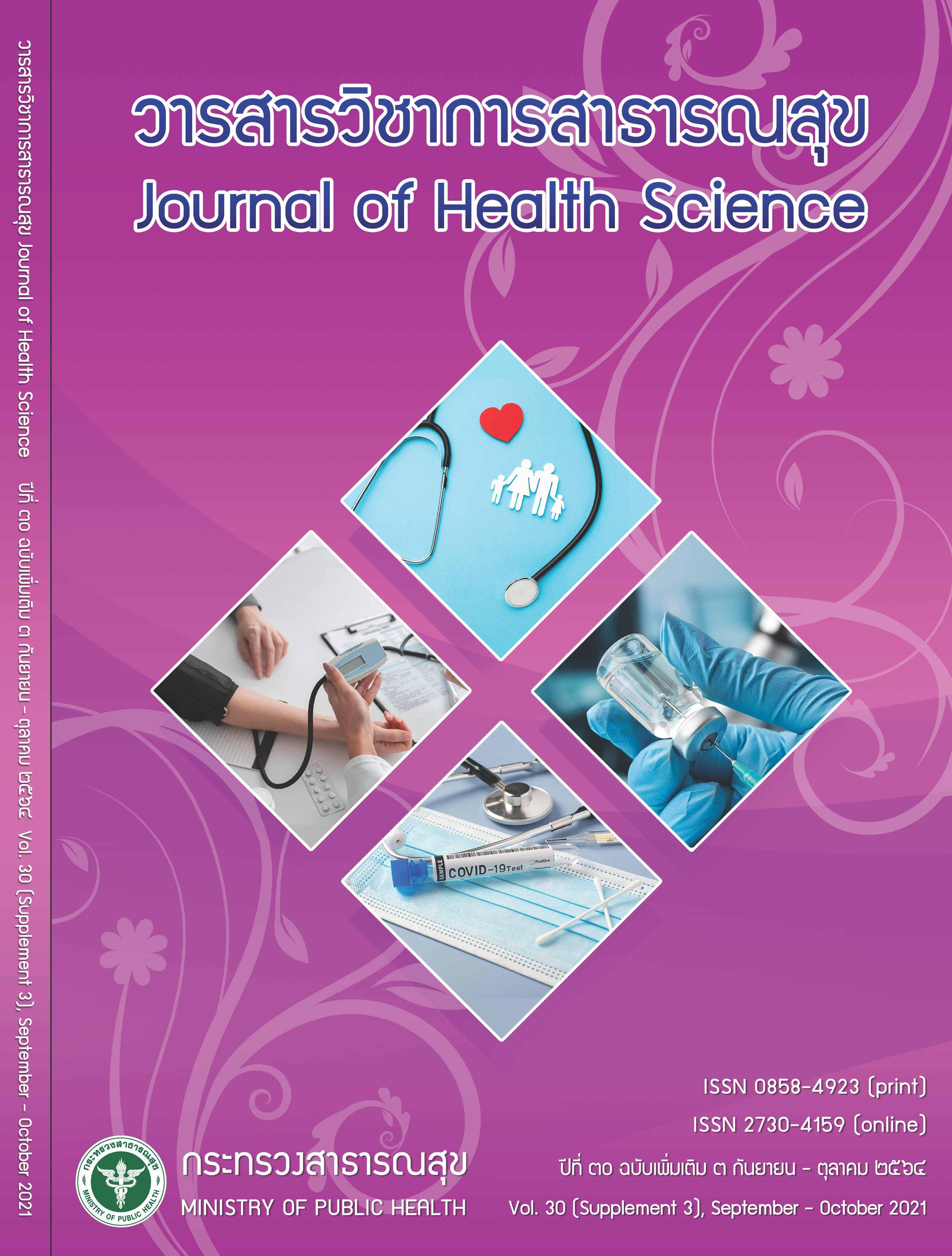การศึกษาชนิดไรอ่อน ชนิดหนู และอัตราการพบเชื้อก่อโรคสครับไทฟัสในหนูจากพื้นที่แหล่งท่องเที่ยวเชิงอนุรักษ์และแหล่งท่องเที่ยวเชิงเกษตร ในพื้นที่ภาคใต้ของประเทศไทย
คำสำคัญ:
หนู, สัตว์รังโรค, ไรอ่อน, พาหะนำโรคสครับไทฟัส, อัตราการติดเชื้อบทคัดย่อ
การวิจัยครั้งนี้มีวัตถุประสงค์เพื่อศึกษาชนิดไรอ่อน ชนิดหนูทีเป็นสัตว์รังโรค อัตราการติดเชื้อก่อโรคสครับไทฟัส และสายพันธุ์ของเชื้อ Orientia tsutsugamushi ในหนูจากพื้นทีแหล่งท่องเที่ยวเชิงอนุรักษ์และแหล่งท่องเที่ยวเชิงเกษตร ่ ในภาคใต้ของประเทศไทย จำนวน 10 แห่ง โดยวางกรงดักจับหนู เก็บตัวอย่างไรอ่อนเพื่อจำแนกชนิด เก็บตัวอย่าง น้ำเหลืองหนูเพื่อตรวจหาการติดเชื้อโรคสครับไทฟัสโดยวิธี indirect immunofluorescence assay (IFA) และเก็บตัวอย่าง ตับและม้ามเพื่อตรวจหาสายพันธุ์เชื้อก่อโรคสครับไทฟัสโดยวิธีอณูชีววิทยา ผลการศึกษา พบว่า หนูทีดักได้ทั้งหมด 165 กรง จากกรงดักหนูทั้งหมด 1,500 กรง มีร้อยละความสำเร็จของการวางกับดัก เท่ากับ 11.00 หนูทีจับได้จำแนกได้ 14 ชนิด ได้แก่ Rattus tanezumi, Maxomys surifer, Bandicota indica, Niviventer fulvescens bukit, Sundamys muelleri, R. tiominicus, M. whiteheadi, Hylomys suillus siamensis, Mus musculus castaneus, R. argentiventer, R. exulans, N. langbiansis, Leopoldamys sabanus และ R. sladeni ในการตรวจหาการติดเชื้อก่อโรคสครับไทฟัสโดยวิธี IFA จาก ตัวอย่างน้ำเหลืองทีส่งตรวจทั้งหมด 165 ตัวอย่าง พบให้ผลบวก 56 ตัวอย่าง (ร้อยละ 33.94) โดยหนูที ่ ตรวจพบมี ่ ระดับภูมิต้านทานต่อเชื้อก่อโรคสครับไทฟัสมี 5 ชนิด ได้แก่ R. tanezumi, R. tiominicus, S. muelleri, B. indica และ M. surifer และในการตรวจหาสายพันธุ์ของเชื้อ O. tsutsugamushi จากตับและม้ามของหนูด้วยเทคนิค PCR พบว่า จาก ตัวอย่างทั้งหมด 111 ตัวอย่าง ให้ผลบวก 9 ตัวอย่าง (ร้อยละ 8.11) ซึ่งสายพันธุ์เชื้อ O. tsutsugamushi ทีพบมี 4 สาย ่ พันธุ์ ได้แก่ สายพันธุ์ Kawasaki-related, Kato- related, Karp- related และ TA763- related พบหนูทีไรอ่อน 127 ่ ตัว จากหนูทีจับได้ 165 ตัว คิดเป็น infestation rate เท่ากับ 0.77 โดยมีจำนวนไรอ่อนทีเก็บได้ทั้งหมด 5,387 ตัว คิด ่ เป็น Chigger mite index (จำนวนไรอ่อนทีพบต่อหนู 1 ตัว) เท่ากับ 42.42 จากการศึกษาครั้งนี้พบมีไรอ่อนพาหะนำ โรคสครับไทฟัส 3 ชนิด ได้แก่ Ascoschoengastia indica (ร้อยละ 42.75), Leptotrombidium deliense (ร้อยละ 30.24) และ Blankaartia acuscutellaris (ร้อยละ 0.02) ซึ่งพบทั้งในพื้นที่แหล่งท่องเที่ยวเชิงอนุรักษ์และแหล่งท่อง เที่ยวเชิงเกษตรที่อาจมีความเสี่ยงต่อนักท่องเที่ยว โดยจะพบไรอ่อนชนิด As. Indica และ L. delicense เป็นส่วนใหญ่ ซึ่งสามารถพบได้ในหนูชนิด R. tanezumi ขณะทีไรอ่อนชนิด ่ B. acuscutellaris จะพบจำนวนน้อยมาก มีข้อแนะนำว่า ควรประชาสัมพันธ์ให้กับนักท่องเที่ยวที่ชอบเดินป่ าศึกษาธรรมชาติ หรือนักศึกษาที่เข้ามาศึกษาด้านวัฒนธรรมและ วิถีชีวิตของประชาชนในชนบท เพื่อป้ องกันตนเองไม่ให้ติดเชื้อก่อโรคสครับไทฟัส
Downloads
ดาวน์โหลด
เผยแพร่แล้ว
วิธีการอ้างอิง
ฉบับ
บท
การอนุญาต

This work is licensed under a Creative Commons Attribution-NonCommercial-NoDerivatives 4.0 International License.







